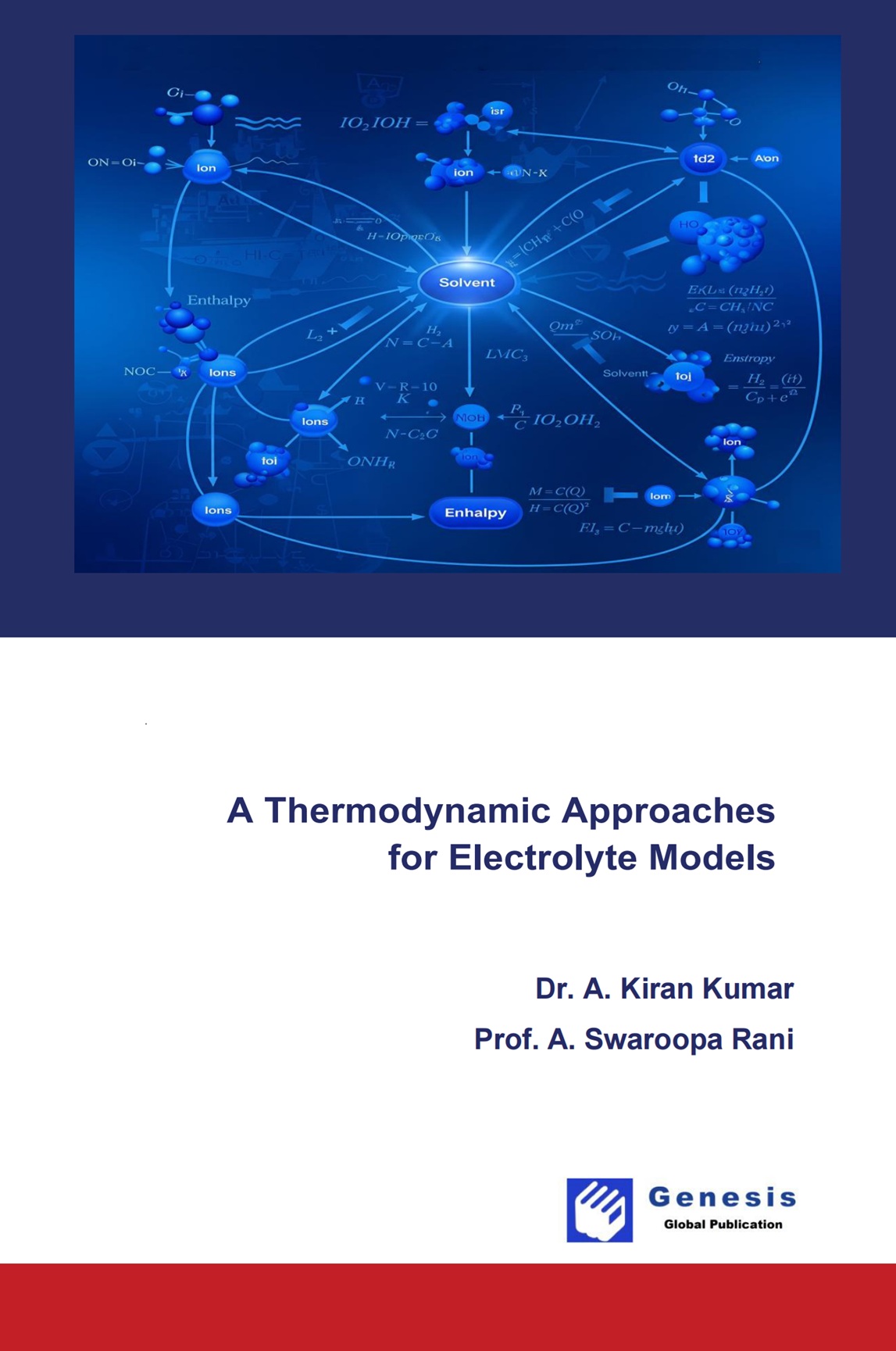
A Thermodynamic Approaches for Electrolyte Models
Author: Dr. A. Kiran Kumar , Prof. A. Swaroopa Rani Category: Academic book Publisher: Genesis Global Publication, Published: 22 Sep, 2025 ISBN: 978-93-92800-22-1 Pages: 91 Country: India Language: English Dimension: 21 x 29.7 cm File Size: 887 kb Tags: Academic Book | DownloadAqueous solutions of multicomponent electrolytes solutions are analogues to natural brines encountered in water pollution control, oceanography and petroleum drilling. A thorough knowledge of the thermodynamic properties of these solutions is useful in understanding the behavior of these solutions. Therefore, in present work the activity coefficient (γ) of NaCl in several aqueous quaternary electrolyte mixtures were determined using the Na ion selective electrode by EMF method at temperatures viz., 25oC, 35oC and 45oC over an ionic strength range of 0.1 to 3.0m. This experimental activity coefficient data were analyzed using the Pitzer equations. With a view to ascertain the validity of Pitzer equations for mixed electrolyte solutions.
The introduction which starts with a brief description on concepts of activity, activity coefficient and osmotic coefficient. Various theories of electrolyte solutions such as (a) Debye-Huckel theory (b) Bromley equation (c) Pitzer theory are described in detail and corresponding equations for calculating activity coefficient of multicomponent electrolyte solutions are given. The Debye –Huckel theory is described briefly while the theory of Pitzer formalism is described in detail. This Pitzer theory may be regarded as extension of Bromley treatment by adding the terms for
- binary interactions of the ions of same sign
(2) ternary interaction involving two ions of the same sign and one of the opposite sign. The Pitzer treatment gives relatively compact and more convenient equations with fewer parameters and are capable of representing and predicting the thermodynamic properties such as activity coefficients, osmotic coefficients of single and multicomponent electrolytes solutions upto their saturation limits. A comprehensive literature survey on the thermodynamic properties of mixed electrolyte solutions related to the present form is given in detail. Finally, a brief note on the scope of the present work is included. at the end of this chapter.
The present work is aimed at (a) experimental determination of activity coefficients of mixed electrolytes solutions containing NaCl in NaCl – MgCl2 – Glycine – H2O, NaCl – CaCl2 – Glycine – H2O, NaCl – SrCl2 – Glycine – H2O, NaCl – MgCl2 – β- Alanine – H2O, NaCl – CaCl2 – β-Alanine – H2O, NaCl – SrCl2 – β-Alanine – H2O, NaCl – MgCl2– L-Valine – H2O, NaCl – CaCl2 – L-Valine – H2O, NaCl – SrCl2 – L-Valine – H2O at various temperatures and concentrations; (b) evaluation of Pitzer ion interaction parameters and estimation of Harned coefficients from the experimental data on all the nine mixtures in order to find the osmotic coefficients and to investigate the validity and usefulness of the Pitzer equations and corresponding mixing parameters (Sq & φ) in modeling the thermodynamic properties of these solutions; (c) calculating the activity coefficients in several environmental waters.